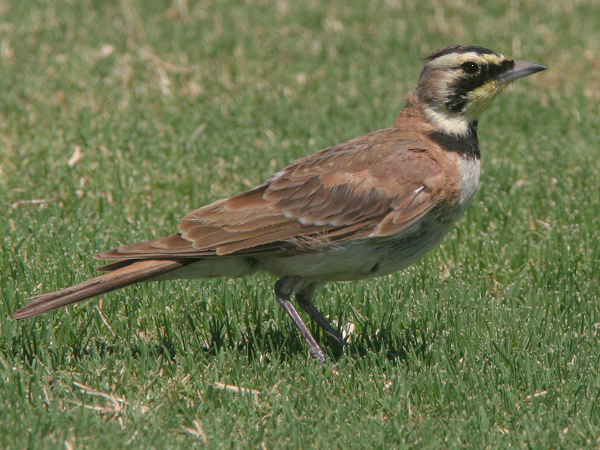
Date: 2006-08-05
Lens: Canon 300mm IS F4 + 1.4x II Converter

 Horned Lark
Eremophila alpestris
Horned Lark
Eremophila alpestris
 Description
DescriptionThis is the only true lark native to the New World. Instead of hopping, this interesting little bird runs or walks along the ground. It moves in an erratic pattern while searching for food (seeds and ground insects). One of the earlier nesting birds, laying eggs as early as February. During courtship, the male will fly 300 to 800 feet above the ground and circle while singing a high-pitched tinkling song. When the song ends, the lark dives straight towards the ground, pulling out of the dive just before hitting the ground. The Horned Lark is also philopatric, which means it returns to its birthplace after every migration. As a result, each local population adapts to the color of its habitat. Fifteen distict subspecies have been identified in the West, including several that can be found within our county.
Gray-brown upperparts with light streaks. Whitish underparts. Black mask, running under the eye from bill to cheek, with white or yellow above (supercilium). Black, crescent shaped band on breast. White or yellow throat. Black tufts, or "horns", which are not always raised. Black tail with white outer feathers. Dark legs. Thin, pointed, dark bill. Juveniles are duller and lack horns. Sexes similar. 6.5 to 8 inches in length.
Open grasslands and beaches.
 Nesting
Nesting3-5 gray eggs with brown spots. The eggs have a 11-12 day incubation period. Fledging occurs in 9-12 days. The nest is a ground hollow lined with fine grass.